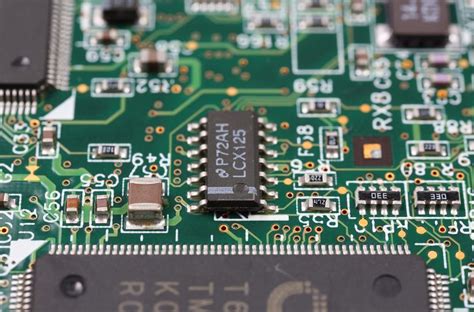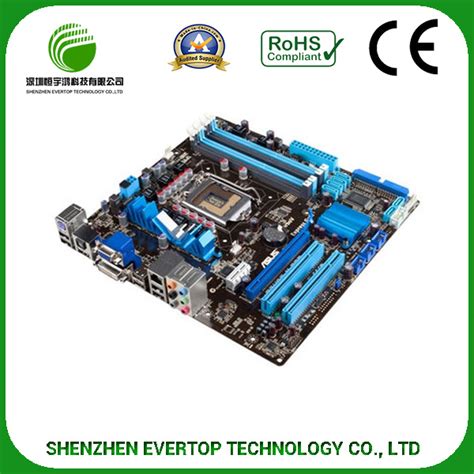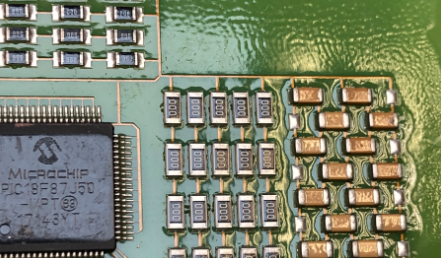Through-Hole vs Surface Mount: Core PCB Assembly Methods Unveiled

Key Takeaways
Understanding the fundamental differences between through-hole technology (THT) and surface mount technology (SMT) is critical for optimizing PCB assembly processes. While THT excels in mechanical strength and durability for high-stress applications, SMT dominates modern PCBA workflows with its compact design and efficiency for high-density boards. Below are essential insights to guide decision-making:
| Feature | THT | SMT |
|---|---|---|
| Component Size | Larger, through-hole components | Smaller, surface-mounted parts |
| Assembly Speed | Slower (manual/selective soldering) | Faster (automated reflow) |
| Thermal Resilience | High (suitable for harsh environments) | Moderate (requires precise control) |
In PCB assembly, THT remains indispensable for connectors and heavy components, whereas SMT enables miniaturization in consumer electronics. Cost dynamics also differ: THT often incurs higher labor costs, while SMT reduces material waste through precision placement. For hybrid PCBA projects, combining both methods can balance performance and scalability. When selecting a method, consider factors like production volume, board complexity, and end-use environmental conditions to align with manufacturing goals.

THT vs SMT: PCB Assembly Differences
The choice between through-hole technology (THT) and surface mount technology (SMT) fundamentally shapes performance, durability, and manufacturing efficiency in PCB assembly. While THT relies on inserting component leads into pre-drilled holes for soldering, SMT mounts components directly onto the board’s surface using solder paste. This distinction creates critical differences in PCBA design: THT offers superior mechanical strength for high-stress applications, whereas SMT enables miniaturization and higher component density.
Design Tip: THT’s through-hole connections are ideal for connectors or heavy components, while SMT’s precision suits high-frequency circuits in compact devices like smartphones.
Thermal management also diverges: THT joints withstand higher temperatures due to deeper solder penetration, while SMT’s reflow process demands precise heat control to avoid tombstoning. Additionally, PCB assembly costs vary—SMT reduces labor through automation but requires advanced equipment, whereas THT involves manual intervention for through-hole insertion.
Material selection further highlights contrasts: THT often uses thicker boards (≥1.6mm) to support drilling, while SMT leverages thinner substrates (0.8–1.2mm) for lightweight designs. For mixed-technology PCBA projects, hybrid approaches combine THT’s reliability with SMT’s space efficiency, though this increases process complexity. Understanding these differences ensures optimal method selection based on electrical, mechanical, and budgetary requirements.
Choosing Between THT and SMT Methods
The decision to use through-hole technology (THT) or surface mount technology (SMT) in PCB assembly hinges on specific project requirements and operational constraints. Mechanical stability, thermal performance, and component density often dictate the choice: THT excels in applications requiring robust physical connections, such as high-power circuits or components subjected to mechanical stress, while SMT dominates modern PCBA workflows due to its efficiency in miniaturized designs and automated production.
When evaluating cost and scalability, SMT typically offers faster assembly speeds and lower labor costs for high-volume manufacturing, whereas THT remains relevant for prototyping or low-volume projects where manual adjustments are frequent. Design complexity also plays a role—SMT supports finer pitch components and multi-layer boards, enabling advanced electronics, while THT’s through-hole leads simplify testing and rework in legacy systems.
Hybrid approaches combining both methods are increasingly common in PCB assembly, leveraging THT for connectors or large components and SMT for integrated circuits. Engineers must weigh thermal expansion mismatches and signal integrity requirements to optimize reliability. For industries like aerospace or automotive, where durability is non-negotiable, THT’s mechanical anchoring often takes precedence, while consumer electronics prioritize SMT’s space-saving advantages. Ultimately, the choice reflects a balance between technical demands and economic realities in PCBA workflows.
Pros and Cons: THT vs SMT Technologies
When evaluating PCB assembly methods, through-hole technology (THT) and surface mount technology (SMT) each present distinct advantages and limitations. THT excels in mechanical stability, making it ideal for components requiring high durability, such as connectors or transformers. Its through-board soldering creates robust joints, suitable for applications exposed to thermal stress or physical shocks. However, this method demands larger board space, limits component density, and increases manual labor due to drilling requirements—factors that elevate costs in high-volume production.
In contrast, SMT enables compact designs by mounting components directly onto the board’s surface, reducing weight and improving signal integrity. Automated PCBA processes with SMT achieve faster production speeds and lower per-unit costs for mass manufacturing. Yet, surface-mounted parts may face reliability challenges under extreme mechanical strain, and reworking faulty components requires specialized equipment.
Hybrid approaches in modern PCB assembly often combine THT and SMT, leveraging THT’s strength for critical parts and SMT’s efficiency for miniaturized circuits. Engineers must weigh thermal management needs, product lifecycle expectations, and budget constraints when selecting between these technologies, as each choice directly impacts design flexibility and manufacturing scalability.
THT vs SMT Applications in Electronics
The choice between through-hole technology (THT) and surface mount technology (SMT) in modern electronics hinges on specific application requirements and operational environments. THT remains critical in high-reliability sectors such as aerospace, automotive systems, and industrial machinery, where components like connectors, transformers, and high-power devices demand robust mechanical bonds. Its through-hole leads provide superior resistance to thermal stress and physical vibration, making it ideal for applications exposed to extreme conditions.
In contrast, SMT dominates consumer electronics and miniaturized devices, including smartphones, wearables, and IoT gadgets. The high-density placement of SMT components enables compact PCB assembly (PCBA) designs, reducing weight and improving signal integrity. Automated SMT processes also streamline production for high-volume manufacturing, aligning with the demand for cost-effective, rapid prototyping.
Hybrid approaches in PCB assembly are increasingly common, combining THT for critical connectors and SMT for integrated circuits. This synergy leverages the durability of through-hole components and the space efficiency of surface-mount parts, optimizing performance in complex systems like medical equipment and telecommunications infrastructure. Understanding these applications ensures engineers select the optimal method for functional, economic, and durability goals in PCBA projects.

Impact of THT/SMT on Manufacturing
The choice between through-hole technology (THT) and surface mount technology (SMT) directly shapes manufacturing workflows, cost structures, and product outcomes in modern PCB assembly. THT-dominated processes often require manual insertion of components, increasing labor costs but ensuring robust mechanical bonds for high-stress environments like industrial equipment. In contrast, SMT-driven production leverages automated pick-and-place systems, enabling faster throughput and smaller PCBA designs – a critical advantage for compact consumer electronics.
Manufacturers adopting SMT typically achieve 30-50% higher component density compared to THT, reducing material waste while demanding precision-controlled reflow ovens for solder paste activation. However, hybrid approaches combining both methods are rising, particularly for mixed-signal boards requiring both durability (via THT connectors) and miniaturization (via SMT ICs). The thermal management challenges in SMT – such as tombstoning or solder bridging – contrast with THT’s vulnerability to wave soldering defects, necessitating distinct quality assurance protocols.
As global demand shifts toward IoT and wearable tech, SMT’s scalability strengthens its dominance in high-volume PCB assembly lines, while THT retains niche roles in legacy systems and prototypes. This duality compels manufacturers to align their process investments with evolving market requirements and lifecycle cost calculations.

Selecting THT or SMT for PCB Projects
Choosing between through-hole technology (THT) and surface mount technology (SMT) requires a systematic evaluation of project requirements. For PCB assembly involving large components or applications demanding high mechanical strength (e.g., industrial machinery or aerospace systems), THT remains advantageous due to its robust solder joints and through-board connections. Conversely, SMT excels in miniaturized designs, enabling higher component density and compatibility with automated PCBA workflows—ideal for consumer electronics or IoT devices.
Design complexity also plays a critical role. THT suits prototypes or low-volume projects where manual adjustments are frequent, while SMT streamlines mass production with precision placement and reduced material waste. Environmental factors, such as thermal stress or vibration resistance, further influence this decision: THT’s through-board leads withstand extreme conditions better, whereas SMT’s compact structure minimizes signal loss in high-frequency circuits.
Cost considerations often tip the balance. While SMT reduces labor and material expenses in high-volume runs, THT may prove more economical for low-to-medium volumes requiring durability. Engineers must align their choice with end-use performance, scalability, and PCB assembly timelines to optimize both functionality and manufacturing efficiency.
Evolution of THT and SMT Technologies
The development of PCB assembly techniques reflects the electronics industry’s pursuit of efficiency and miniaturization. Through-hole technology (THT), dominant since the 1950s, relied on component leads inserted into pre-drilled board holes, ensuring robust mechanical bonds ideal for high-reliability applications. However, the 1980s brought a paradigm shift with surface mount technology (SMT), which eliminated drilling needs by mounting components directly onto PCBA surfaces. This innovation aligned with the rise of automated pick-and-place systems, enabling faster production and denser circuit layouts.
Advancements in materials science further propelled SMT adoption. Smaller passive components, fine-pitch ICs, and reflow soldering techniques allowed for PCB assembly processes that reduced board sizes by up to 70% compared to THT. Meanwhile, THT evolved to address niche demands, leveraging mixed-technology PCBA designs for applications requiring both mechanical durability (e.g., connectors) and high-density circuitry.
The introduction of lead-free solders and environmental regulations in the 2000s accelerated SMT refinement, while THT maintained relevance in aerospace and industrial systems. Today’s hybrid approaches combine both methods, showcasing how technological evolution in PCB assembly balances innovation with legacy compatibility.
Cost Factors: THT vs SMT Assembly
When evaluating PCB assembly costs, the choice between through-hole technology (THT) and surface mount technology (SMT) hinges on multiple variables. Labor intensity remains a critical differentiator: THT processes often require manual component insertion and soldering, increasing labor expenses for high-volume production. In contrast, SMT leverages automated pick-and-place systems and reflow ovens, reducing per-unit labor costs but demanding higher upfront investments in machinery and programming for PCBA workflows.
Material costs also diverge significantly. THT components, typically larger and with leads, incur higher material expenses in complex layouts, while SMT parts—smaller and leadless—enable denser board designs, lowering raw material use. However, SMT necessitates specialized materials like solder paste and stencils, adding to initial setup costs. For prototyping or low-volume orders, THT may offer cost advantages due to simpler tooling requirements.
Tooling and rework expenses further influence decisions. SMT’s precision-driven process minimizes soldering defects but demands costly rework equipment for microscopic components. THT’s robust mechanical bonds simplify repairs, though inconsistent manual soldering can escalate QC costs. For manufacturers balancing scalability and budget, hybrid approaches—combining SMT for miniaturized components and THT for high-stress parts—often optimize cost-efficiency in PCB assembly projects.
Conclusion
The evolution of PCB assembly methods has redefined modern electronics manufacturing, with both through-hole technology (THT) and surface mount technology (SMT) offering distinct advantages. While THT excels in mechanical stability for high-stress environments, SMT dominates in enabling compact, high-density designs critical for today’s miniaturized devices. The choice between these PCBA approaches hinges on project-specific requirements: durability versus space efficiency, manual prototyping versus automated scalability, and cost considerations across production volumes.
As industries prioritize smarter, faster, and more reliable manufacturing workflows, hybrid solutions combining THT and SMT are gaining traction. These integrated approaches leverage the robustness of through-hole components for connectors or heavy parts, while surface-mounted devices optimize board real estate for complex circuitry. Engineers must weigh factors like thermal management, signal integrity, and lifecycle demands when selecting assembly methods. Ultimately, advancements in PCB assembly equipment and materials continue to blur traditional boundaries, empowering manufacturers to deliver tailored solutions that balance performance, cost, and innovation.

Frequently Asked Questions
What are the primary applications of THT in modern PCB assembly?
Through-hole technology (THT) remains critical for components requiring mechanical stability, such as connectors or high-power parts. While SMT dominates high-density designs, THT is preferred in aerospace and industrial equipment where vibration resistance is paramount.
How does SMT improve efficiency in PCBA manufacturing?
Surface mount technology (SMT) enables automated placement of smaller components on both sides of the board, reducing manual labor and material waste. This method supports higher component density, making it ideal for consumer electronics like smartphones and wearables.
Can THT and SMT be combined in a single PCB assembly?
Yes, hybrid PCBA designs often merge THT for robust connectors and SMT for compact ICs. This approach balances durability with miniaturization but requires careful thermal management during soldering to prevent component damage.
Which factors determine the cost difference between THT and SMT?
THT typically incurs higher labor costs due to manual insertion, while SMT involves upfront investments in stencils and reflow ovens. For high-volume production, SMT becomes more cost-effective, whereas THT suits low-volume or prototype projects.
How has SMT influenced the evolution of electronics design?
The shift to SMT enabled thinner devices with enhanced functionality, driving innovations like IoT sensors and foldable displays. However, THT continues to evolve, with advanced through-hole connectors supporting next-gen 5G infrastructure.
Ready to Optimize Your PCB Assembly Strategy?
For tailored solutions in THT and SMT integration, please click here to explore professional PCBA services. Our experts ensure precision-matched technologies for your project’s unique requirements.






